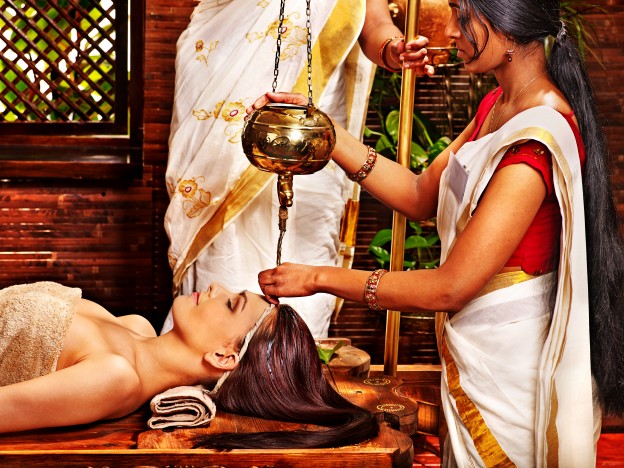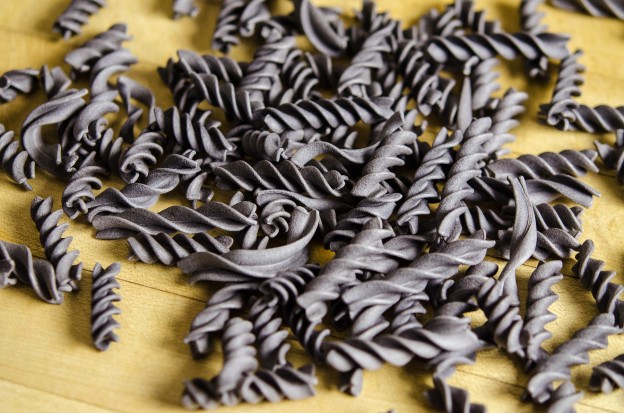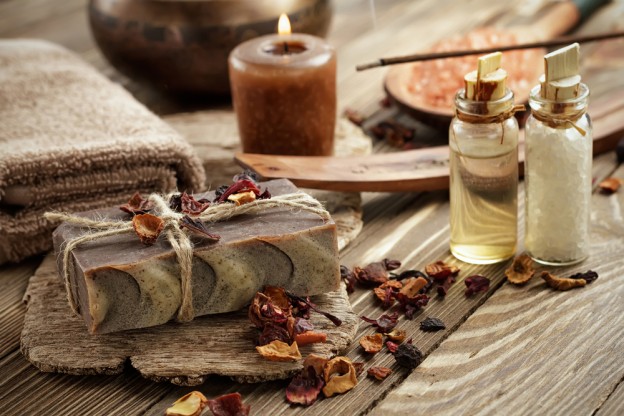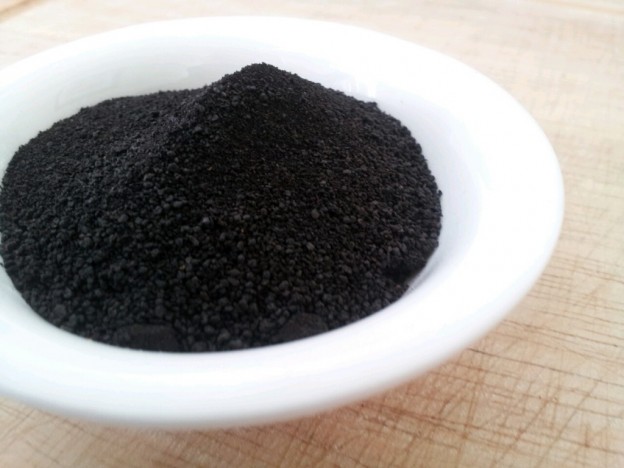Author Kathryn Herbert; Ayu Ct P, RYT 250 with
Dr Sachin Kotalganor; MD (India) Ayu Physician DPU, IAA Secretary
SHILAJIT, or Silajatu as it translates from Sanskrit to mean “rock invincible”, is Mineral Pitch collected from the mountainous ores found in the Himalayan region and is known also as Moomie (Russian). The ancient science of Ayurveda has valued this substance for thousands upon thousands of years.
It has gained much recent attention on the modern nutraceutical market with the health and fitness crowd- and with good reason. The ancient Physician of Ayurved states in the Charaka Samhita states “a person who is correctly using Shilajit with Sattvic diet for 3 months of Rasayana will be free of disease and ailments, and shall live long life of 100 years..” The ancient Yogi Sherpas of the Golden Age have gone down in history of having strength, virility, and longevity. TCM (Traditional Chinese Medicine) explains mountainous ore Mineral Pitch as “Fat for the 5 Spirits” noting that it serves all of the elemental humors. A long time tradition exists in both cultures is to supplement the adult and children diet alike.

So, what is it exactly??
As the Latin Botanical name Asphaltum Punjabianum suggests, it is the tar-like substance of the Punjabi region of the world that oozes out of the mountainous ore rocks when they heat up. It then cools and hardens to a crystalline rock. This process is not unique to the Himalayas, it happens in the mountainous regions all over the world. If you have ever seen the summer sun heat up asphalt pavement until it sweats out sticky icky tar- you have witnessed the process. So of course, please don’t go out and scrape some of this stuff off of the road and consume it, that is poison! But do understand that Nature creates this process on her own, taking centuries to nurture biologic and geologic compounds to produce mineral rich pitches full of microelements in a bioactive substance that is water soluble and absorbed by the bodily tissues when consumed.
The ancient texts refer to Shilajit as coming in four varieties per the ore type. Gold, resulting in a deep red/pink color , “color of the hibiscus flower”, Silver, resulting in a whitish hue, Copper, is blueish green, resembling “color of the peacock’s nape” and Iron Ore, resulting in black tar-like substance that hardens to shiny black crystalline rock.
It is this black mineral pitch that comes from Iron ore that Ayurved uses as a “Rasayana” or a “rejuvenating” substance. It has been used classically for thousands of years in conjunction with other herbs with the ancient understanding that it is a “yogavahi” therefore a “carrier” of substances into the deep tissues by permeating the “prana” or “life force” enhancing the effects of everything we take in.
Noting that mountainous ore mineral pitch components will vary pursuant to the region of collection, modern day laboratory science has recorded composition of over 85 minerals and microelements, most notably Humic and Fulvic Acids. Modern science postulates that “Fulvic Acid is a biologically active compound with dibenzo-a-pyrones and acts as a carrier of other substances”. Yogavahi. The ancients knew that already.
Shilajit has been long used for its positive effects on the urinary-genital system and muscular stature, therefore it is prized to build male virility and potency. It’s anti-lipidemic action has been used to balance high blood sugar levels and remove fat. Circulation through the blood stream enkindles bile secretion from the liver; a function of Pitta, the doshic element of Fire responsible for transformation.
Clinical studies throughout the world today are being conducted regarding the use therapeutic use of Shilajit for a variety of research projects of condition treatment including Alzheimer’s disease. Most notably, the modern day scientific community has regards for the antioxidant effects upon free radicals. Recent studies on composition of Andean Shilajit collected in Chile show an ORAC index between 50 and 500 Trolax units/g of material which is substantially higher than Blueberries or Noni fruit, concluding that it is a powerful antioxidant phytocomplex (per NCBI; National Center for Biotechnology Information).
I know it sounds great so far, but before you run out and get some then start downing like potato chips, understand that everything (including potato chips) comes with it’s risks.
Do you remember that this substance is a “yogavahi”? In Sanskrit, “vahi” means carrier and “yog” means that there is union. Simply put, yogavahis carry other substances to the deep tissues. This means ALL substances (including potato chips). Do you remember that Charaka states “taken correctly with a Sattwic diet..” ? This means that the user will experience an increased effect in ALL of the “prana” or life force taken in from substances, good or bad. There is a fine line between enhancement vs aggravation in the delicate balance of our Doshic nature. A sattvic diet is tri-doshic and leads to blissful balance of mind and body. Everything else is a possible perceived invitation of chaos.
The perforation of the prana allows all of the body’s 40 types of “Agni”, or “fire” kindle throughout the system. This can either build tissue or burn tissue. For this reason, it is strictly recommended that the user follow a diet that does not provoke the Pitta dosha as it is governed by the element of fire. Applied to lifestyle, this means that substances that are Pungent, Sour (acidic) and Salty are to be avoided or strictly moderated to avoid systematic imbalance. Food examples, to name just a few, include chili peppers, grapefruit/oranges, pickled things, dark leafy greens and nightshades such as bell peppers, tomatoes, and eggplant. The ancient texts notably mention that Madras Gram (aka horse gram or moth bean) should be avoided- in the modern day West, we could use this theory to include all of those legume type beans that tend to be dark in color and rich sources iron. Modern science supports this as these high in iron pulses are deficient in methionine and tryptophan leading to hyperacidity. (Just as the ancient Charaka Samhita so states..)
The ancient texts teach us to take Shilajit with warmed milk; the most sattvic and life giving substance of the Universe. Our modern day factory farmed milk is grossly lacking the sattvic qualities of the sacred fluid, so please use Cow’s or Goat’s milk that is Organic and NOT homogenized from a BPA free container. If those choices are not ok for you, you may use Almond or Rice milk prepared using only almonds or rice with clean water not containing any additives, gums, fillers, flavorings or preservatives, etc. Avoid Soy and Cashew milk as these things can potentially raise Pitta. Milk is indicated as the best way to administer Shilajit as it carries the resinous substance passed the acidic condition of the stomach fluid onto deeper digestion to be utilized by the tissues.
Shilajit is contraindicated when combined with alcoholic substances. In as much that it is water soluble, it is insoluble in alcohol, chloroform and ether. Alcohol is extremely Pitta provoking and highly rajasic in nature. Do not consume alcoholic beverages if you are taking Shilajit.
 If you do decide to implement use of Shilajit as a part of your wellness regime, let the buyer beware and choose your product from a reputable source. Use this and all other Ayurvedic remedies under the guidance of a dually qualified Ayurvedic Practitioner and follow the recommendations.
If you do decide to implement use of Shilajit as a part of your wellness regime, let the buyer beware and choose your product from a reputable source. Use this and all other Ayurvedic remedies under the guidance of a dually qualified Ayurvedic Practitioner and follow the recommendations.
The ancient texts place intricate emphasis on the “Rasashastra” or the correct preparation of substances through proper training of specialized chemistry. This continues to be of great importance today as there is an ever present inherent risk of contamination by poisonous heavy metals such as lead, mercury and arsenic. Remember the tar from the road? Know what you are buying and consuming.
Wu-ling-zhi (latin botanical: feces trogopterori seu pteromi) sourced from China is illegal for US trade at the time of this writing. Information is not clear as to whether this is due to its bio-scarcity or its potential risks.
Always choose your products from a provider that has a solid reputation of bio-sustainability, can prove its source and can substantiate claims of contents by purity reports.
Wishing you harmony, happiness and health,
Kathryn Herbert; Ayu Ct P, RYT 250
With Dr Sachin Kotalgaonkar, MD (India) Ayurvedic Physician
AyurWay..your way of life
 have to know how to spell or pronounce it correctly! The word may sound a little unusual, but it’s much simpler than you think. In Sanskrit, ayu means ‘life’ and veda means ‘knowledge’ or ‘science.’ ‘Life science’ isn’t just ancient Sanskrit; it’s for everybody living in modern times. To me, it is the perfect owner’s manual package of common sense for the human mind, body and spirit.”
have to know how to spell or pronounce it correctly! The word may sound a little unusual, but it’s much simpler than you think. In Sanskrit, ayu means ‘life’ and veda means ‘knowledge’ or ‘science.’ ‘Life science’ isn’t just ancient Sanskrit; it’s for everybody living in modern times. To me, it is the perfect owner’s manual package of common sense for the human mind, body and spirit.”









 If you do decide to implement use of Shilajit as a part of your wellness regime, let the buyer beware and choose your product from a reputable source. Use this and all other Ayurvedic remedies under the guidance of a dually qualified Ayurvedic Practitioner and follow the recommendations.
If you do decide to implement use of Shilajit as a part of your wellness regime, let the buyer beware and choose your product from a reputable source. Use this and all other Ayurvedic remedies under the guidance of a dually qualified Ayurvedic Practitioner and follow the recommendations.



